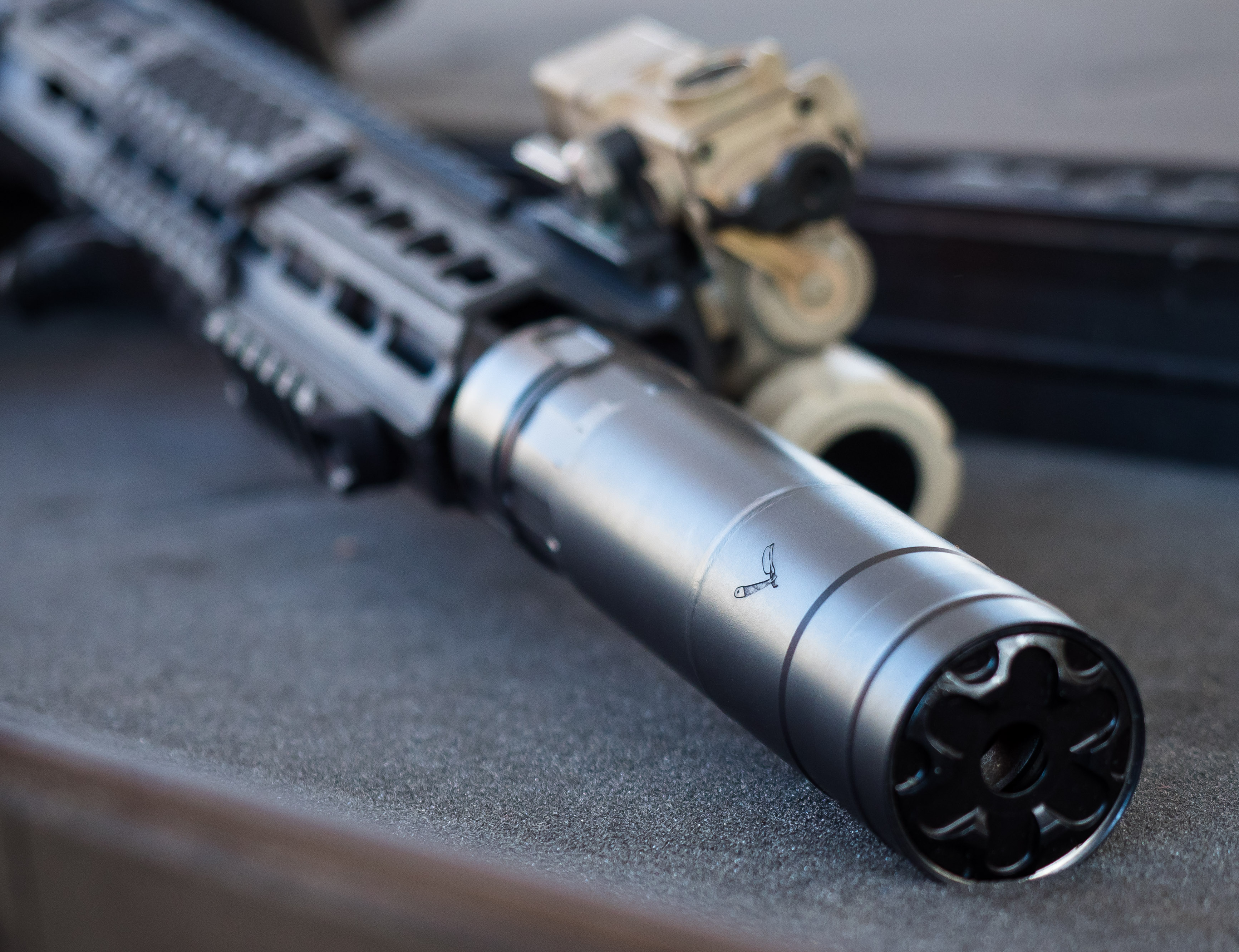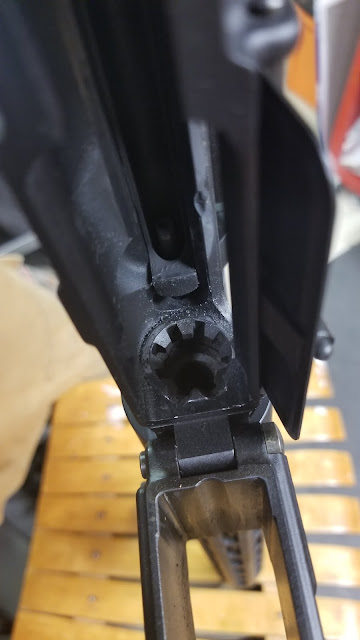Suppressors

Introduction:
Popular amongst movie secret agents and modern special forces alike, suppressors are a tool in modern warfare that provides its user distinct, specialized advantages over their opponents. Suppressors function to simply make the sound of a gunshot quieter. How quiet the shot is depends on a few factors, which is why the common moniker of "silencer" can be misleading for people that have never heard a suppressed gunshot. I'm going to go over how the majority of suppressors work, some interesting history of their use, and then some of the use-cases for suppressors both by military and civilian shooters.
Details:
How does it work?
The noise of a gunshot is pretty much caused by three things: the firearm's action cycling, the report of the bullet and hot gasses leaving the muzzle, and the supersonic crack of the bullet in flight. A suppressor can effectively take one of these out of the equation. Suppressors function by providing space for the fire and gasses leaving the muzzle to expand and disperse.
 |
| Source |
Typically, this takes the form of a cylindrical form wither threaded onto the barrel or attached via some other mechanism. Inside the suppressor, there are what are called baffles. These baffles create chambers within the suppressor for gas to expand into. Basically, the greater amount of surface area for gas to expand within the suppressor, the more effective the suppressor is at doing its job. Designs for these baffles and gas chambers have taken a lot of different forms over many decades. Some of the first suppressors were hollow tubes filled with rubber disks, while modern suppressors use more advanced materials such as titanium alloys for their baffles.
By allowing the gasses for a gunshot to violently expand while being contained in a hollow space, suppressors eliminated the report and muzzle flash of the shot. If a shooter is firing a lot of shots in rapid succession, there is the possibility of the suppressor's effectiveness being reduced. By allowing any leftover gasses to flow out after a few shots, a suppressor can most effectively do its job.
History:
Suppressor use and development has gone on for decades, but really saw solid use in WWII and beyond. The Welrod pistol is a very famous example from WWII.

The Welrod effectively eliminated all three things that make a gunshot loud. It was a bolt action pistol, so there was no noise from the action. It had a very effective suppressor with many rubber baffles that sealed behind the bullet to prevent gas and muzzle flash from escaping. It also utilized a ported barrel that kept the bullet subsonic. This made sure that there was so supersonic crack from the bullet flying.
The Welrod has a surprisingly long service life because of how quiet it was to shoot. It was used by Denmark in WWII and stayed in use by British special forces all the way up to Desert Storm.
Another famous suppressor was the Russian PBS-1. Also famous for being extremely effective and quiet, the PBS-1 was introduced in the 1960's and saw plenty of use in the Soviet-Afghan war. The AK-74 was in fairly widespread use by the war, but the PBS-1 was limited to use by the AKM. There are stories of Spetsnaz units in Afghanistan valuing the suppressor on the AKM so much, that they would keep a suppressed AKM for taking out dogs and sentries, before switching to their AK-74 for firefights.
The PSB-1 was a pretty basic suppressor design, but what really made it especially quiet was the rubber wipe that it used in the tip of it. The wipe would only last around 20 or so shots, but if it is used sparingly, it could stay very effective.
Use Cases:
Suppressors provide valuable use cases in both the military and civilian worlds. In the military world, there are some obvious and not-so obvious benefits of suppressor use. Obviously, if stealth is a priority, a suppressor and subsonic ammunition can help with that. However, even with a suppressor, the gunshot is still decently loud and will be heard. Suppressors also provide a benefit in generating confusion in the enemy. If suppressors are being used to engage an enemy at distance with normal ammunition, the enemy is still going to know they're being shot at. The benefit that suppressors provide is that the enemy will have a harder time figuring out exactly where the shots are coming from. By snuffing the report of the gunshot and hiding the muzzle flash, the suppressor allows its user to remain unseen while engaging an enemy.
In the civilian world, suppressors provide a lesser benefit than in the military. Aside from being fun, when combined with subsonic ammunition, suppressors can make gunfire hearing safe. This is best for newer shooters or people that are more sensitive to the noise or concussion of a gunshot. By using a suppressor on a gun used by a new shooter, a new shooter can focus on more fundamental skills without worrying about a muzzle blast.
Conclusion:
Suppressors are really cool for the civilian world, but, in my opinion, are way too regulated. In order to buy a suppressor, you have to pay for it at your FFL, and file paperwork and pay $200 for a tax stamp from the federal government. After that, you play the waiting game. Before you can take possession of your suppressor, you have to wait for months on end until your ATF paperwork clears and you receive your tax stamp. Personally, I don't really understand the opposition to deregulating suppressors. They're incredibly easy to manufacture illegally with components off of Amazon, so I don't suspect that a deregulation of suppressors would result in an increase in their use in crimes.
The US could have deregulated suppressors if the GOP was as pro-gun as they would like you to believe. During the first half of Trump's presidency when the GOP controlled all houses of government, the Hearing Protection Act was in congress and was not taken up. The Hearing Protection Act would have deregulated suppressors to the point where they would be regulated at the same level as a rifle or shotgun. This means that a background check at an FFL would still be performed. Unfortunately, this was a wakeup call to many gunowners, where they realized that maybe the GOP doesn't actually have their interests at heart.

Comments
Post a Comment